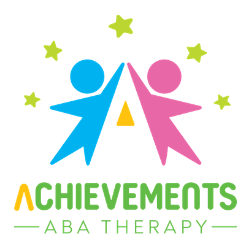How does the ABC Model and Functions of Behavior help behavior analysts?
When faced with disruptive behavior, behavior analysts (also known as BCBAs) often run something called Functional Behavior Assessment.
What is a Functional Behavior Assessment?
As BCBAs, we try to keep records of behaviors and their antecedents and consequences.
This helps us better understand the possible function, or purpose, of the problem behavior.
When we understand the purpose of the behavior, we are able to make better decisions about how to help change the behavior.
At Achievements ABA Therapy, an expert BCBA will work with your child (and of course you, the parent!) to conduct an FBA.
This helps us better understand the cause of your child’s behavior and formulate a plan.
The first step is having you, the parent, collect ABC data on the problem behavior.
You will begin to track the following information for each incident of the target behavior.
Date
In this column, you will write the date of the incident.
Based on this information, we will be able to see how often the target behavior occurs.
Time- beginning and end time of problem behavior
It is important to track the beginning and end time the problem behavior.
Certain times or places the tantrum lasts 2 minutes. Other situations can cause longer and more intense tantrums.
Where did the behavior take place?
This is another important piece of information to track.
As we are documenting the incidents of problem behavior, we may notice different things.
The data can show us that your child only acts out in situations with loud music or hot temperature. These antecedents/ situations can be easily avoided or temperatures can be adjusted.
What activity was your child involved in?
This information describing the antecedent can also be helpful in determining the function of the behavior.
This helps us generate a plan to help your child succeed without aggression or inappropriate behavior.
For example, we may find that your child is doing math homework each time she is observed throwing pencils.
It is very possible that the homework is too hard for her. A good idea can be to speak to her teacher about sending work that is on your child’s academic skill level.
Many behaviors are caused by antecedents that can easily be adjusted or fixed. There may be no need for us to intervene.
Who was involved?
This helps us determine which people serve as antecedents for specific behaviors.
Antecedent
What took place right before the behavior?
Behavior
What did the behavior look like? What was the severity or intensity?
Consequence
What happened next?
Proposed function
Based on this information, we will be able to determine the proposed function of the behavior. We can see if we think the behavior is maintained by an escape, attention, sensory or tangible function.
After tracking this for a few days, we will be able to run a proper FBA. The next step is to work on a behavior support plan.
The behavior support plan gives your child the skill necessary to help attain these functions in a more appropriate way.



















